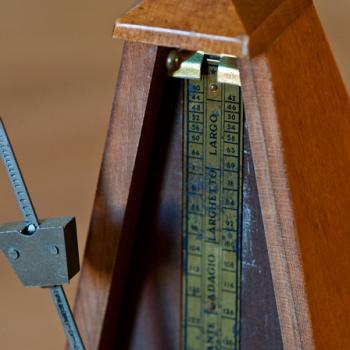
When Stillness Hides Its Face From Us
How do we respond when stillness hides its face from us?
The games we play as children often describe our expectations and understanding later in life. I remember playing unforgettable marathon games of hide and seek. You have not really learned the lessons of hiding and seeking until you play at night in a church with the lights off.
Hide and seek taught me about when to hide and how to seek.
Some of us believe, deep within ourselves, in the power of hiding. It is as if it were possible for us to camouflage ourselves out of responsibility. Like having an invisibility cloak, we cover ourselves to avoid the consequences of our actions.
We want to hide and get away without getting caught.
Many of us seem to believe spiritual life works the same way. It is as if we want to hold onto spiritual life and force it to give us what we want. We may want answers, or comfort, or reassurance. Trying to hold on, we want to stare spiritual life in the face and make it give us what we want.
At just those times stillness hides its face from us.
We believe we have every right to expect stillness to surround us and embrace us, but it will not look at us.
When we sit down and breathe deeply, listening for sacred stillness, we find only emptiness.
It is as if spiritual life has evaporated, leaving us tired and alone. Where do we turn when stillness hides its face from us?
We listen, but instead of stillness we hear nothing.
Emptiness and nothingness cuts us off from the sacred stillness which draws us in and wraps us in its arms.
Even the stillness within us seems to have abandoned us and left us alone.
Listening When Stillness Hides Its Face
It can be so tempting, so seductive, so easy for some of us to simply give up and fall back to sleep.
Others of us struggle against being left by sacred stillness. We try to see what we have done wrong, what we can correct, what we can practice more diligently. It is as if we can persuade stillness to show its face, to return to us.
The fact is we are like little children who believe everything disappears when they close their eyes. Their idea of hiding is to look away or cover their eyes. If they cannot see other people, then other people must not be able to see them.
We are afraid spiritual life has abandoned us because we do not sense it with us, cannot hear it in the stillness.
Some of us seem to believe we have spiritual life under control. We apparently think we have figured it out. Our answers satisfy us, and we do not want anything trying to change them.
We have studied and analyzed a glass of water and are confident we understand it. As we look into the glass we believe we are staring water in the face, eye to eye.
Spiritual life, though, is not a glass of water, or a gallon, or a well, or a river, or a lake. It is larger than an ocean, more complex than the storm front carrying all those clouds full of rain.
We do not like it when sacred stillness hides its face from us because we do not trust it. Our confidence is more in how we understand stillness than in stillness itself.
Listening to stillness is not about analyzing or understanding a glass of water. We listen to stillness by taking a drink.
Trusting When Stillness Hides Its Face
Some of us may feel something has been taken or removed from us when stillness hides its face.
We believe we have learned to discern and listen to stillness, and now we question our own practices. Were we ever truly listening to sacred stillness? Was it ever truly there? What if it was all a mistake?
Sacred stillness is neither a pet nor a toy we have trained so we can play. Our spiritual practices are not the same as practicing a sport or a performance.
If anything, spiritual life shapes us, we do not shape it.
We grow accustomed to the experience of spiritual life. Some of us have been familiar with spiritual life since we were children.
The fact is when stillness hides its face from us it is an act of love, showing us spiritual life is not tame. We believe we can domesticate it, but we cannot. Our relationship is more significant, more powerful than that.
Spiritual life is not safe, not tidy. We are learning to trust it, even when we do not understand how it is working.
We learn to trust when sacred stillness hides its face from us.
What We Learn When Stillness Hides Its Face
Many of us like to believe sacred stillness is somewhere we can go to find rest.
We forget how we need to struggle and work to practice listening to stillness. When we sit still, taking deep breaths with our eyes closed, it takes effort to pay attention to stillness. It is easy for us to be distracted, to allow our thoughts and feelings to get in our way.
The rest we find in sacred stillness comes from our continued contemplative practice. We sit, listening to stillness, giving our permission to spiritual life living and working in us. It is often not easy or restful.
We work hard and, just when we begin to feel we are getting somewhere, stillness hides its face from us.
Slowly, over time, we begin to learn our practice of listening to sacred stillness is not about us. It does not depend on our skill or our persistence.
We practice listening to sacred stillness and it does its work within us.
What can we begin to see when stillness hides its face from us today?
How will we pay attention when sacred stillness hides its face this week?
[Image by d.kyryliouk]
Greg Richardson is a spiritual director in Southern California. He is a recovering assistant district attorney and associate university professor, and is a lay Oblate with New Camaldoli Hermitage near Big Sur, California. Greg’s website is StrategicMonk.com and his email address is [email protected].












